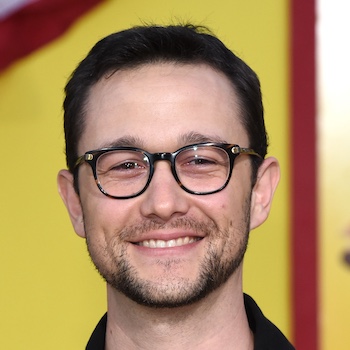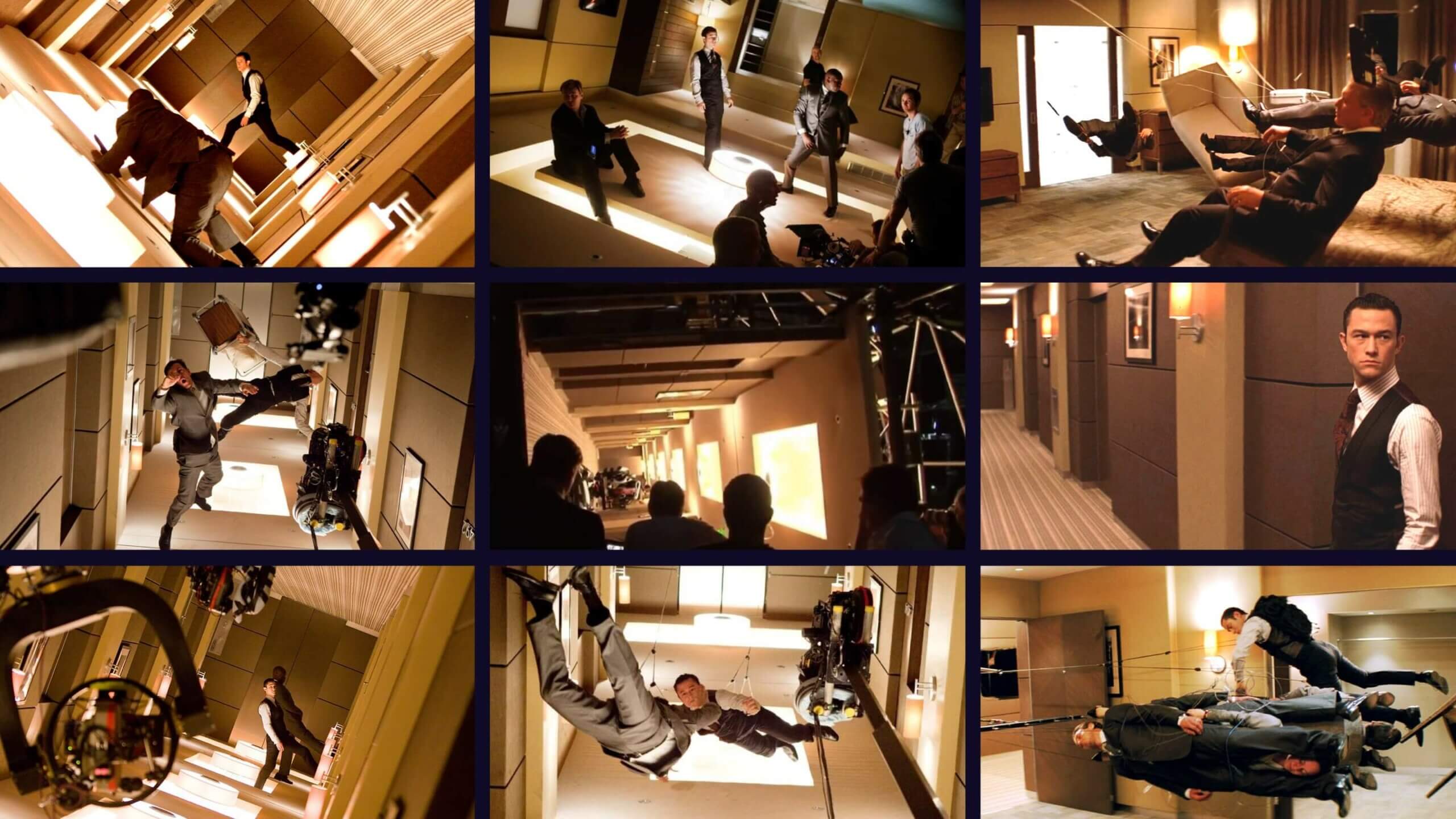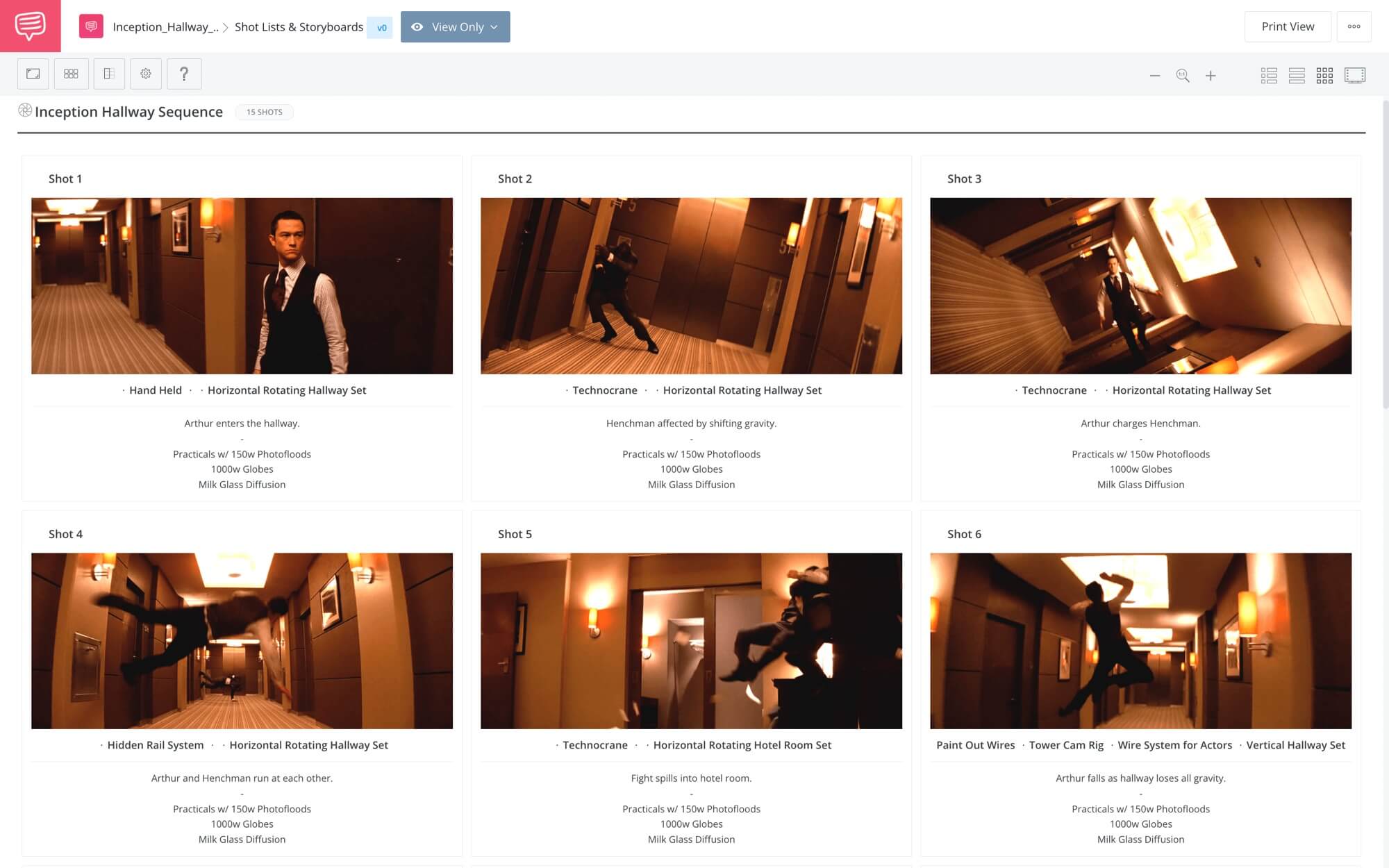The Inception hallway scene is one of the all-time best cinematic action scenes – but how did director Christopher Nolan and his production team make it? We’re going to take you behind the scenes to show you the technical ingenuity of the Inception hallway scene. A sequence that not only boggles the mind but was executed without the use of CGI. By the end, you’ll know how the scene was made, and why it’s such a remarkable example of practical effects.
How Did They Film the Hallway Scene in Inception?
Inception hallway scene making of
Storyboards often play an important role in the pre-production phase of action scenes. Check out some awesome Inception storyboards below!

Inception Hallway Scene Storyboard
StudioBinder’s storyboard creator software is great for organizing, tagging, and sharing storyboards. We imported a series of stills into StudioBinder’s storyboard creator to show you how Christopher Nolan and the Inception team might have visualized the hallway scene shoot before arriving on set.
How Was Inception Filmed? • Storyboards are Key
The images in the storyboard wouldn't have been photographed stills, but rather sketches. As such, this example is just an approximation of the storyboarding process.
Inception Spinning Room
Building the Inception rotating set
It’s fair to say that the production team for Inception went absolutely bonkers building the hallway set. But how did they do it? Well, through a whole lot of engineering, careful planning and imagination.
Nolan and the production team had to plan for more than just the locomotion of the set; they had to plan for the associated change in lighting, camera movement, blocking and staging, amongst other things. However, the idea of building the set on a centrifuge wasn’t entirely unprecedented.
Check out the quote below to see where Nolan found inspiration for the Inception hallway scene’s design:

“The idea of using a centrifuge to manipulate gravity has been done on various films, most notably [Stanley] Kubrick’s 2001. I like the idea of repurposing that technology and really trying to choreograph a fight sequence,” said Inception director Christopher Nolan on the inspiration for the hallway scene.
— Christopher Nolan
2001: A Space Odyssey — one of Stanley Kubrick’s best movies — is widely credited with pioneering a variety of practical effects. The centrifuge set built for the film’s “anti-gravity running track” scene is proof of the film’s daring approach to special effects.
Check out the scene below, and think about how it laid the groundwork for the Inception hallway scene!
Inception Hotel Scene, Inspired by the Centrifuge in 2001: A Space Odyssey
It’s clear that Nolan and his team took a lot of inspiration from the centrifuge in 2001: A Space Odyssey, however, they also upped the ante by increasing the rotations — while director of photography Wally Pfister captured the image more dynamically. Of course, Kubrick and cinematographer John Alcott can’t be blamed due to the limitations in camera technology.
Inception Hotel Scene in Action
Choreographing the Inception fight
The Inception hallway scene isn’t just brilliant for its direction, production design, and cinematography, but for its terrific acting as well. Joseph Gordon-Levitt has described the process of training for the scene on more than a few occasions. And he makes it clear that the scene was difficult to execute.
Here, Gordon-Levitt describes the training process as…“unexpected.”
Inception Fight • Joseph Gordon-Levitt Looks Back on Shooting the Inception Hallway Scene
The Inception hallway scene special effects were revolutionary for the time — so it makes sense Gordon-Levitt was overwhelmed by the nature of its planning. Here’s what Gordon-Levitt had to say on the matter:

“The Script for Inception did not allude to how involved, in particular, like ‘I’m in this big dream fight sequence that sort of weaves through the whole second act of the movie. In the script, it’s like one line of stage directions. It’s like ‘Arthur gets in a fight’ or something like that. And I remember as they started to present me with this fight sequence I was going to learn, and I was introduced to stunt coordinators, and talking about my schedule for training and things like that, I was like ‘hmm?’”
— Joseph Gordon-Levitt
It’s true that the Inception screenplay doesn’t go into much detail on the blocking and staging of the hallway scene. However, it’s not as simplistic as “Arthur gets in a fight.”
We imported the Inception screenplay into StudioBinder’s screenwriting software to take a closer look at the hallway fight scene. As you’re reading, think about how Nolan uses cross-cutting in his writing.
Writing the Inception Fight • Inception Hallway Scene in the Screenplay
In this scene, Nolan uses cross-cutting to establish a hectic pace and elevate the tension. But the cross-cutting isn’t just a stylistic decision, it’s a plot-driven decision as well. The spinning of the hallway corresponds to the motion Arthur experiences in the van.
Inception won the Oscar for Best Visual Effects and it's no wonder why. Even when CGI can accomplish just about everything, there's nothing quite like the real thing. Granted, not every filmmaker has the budget to execute a sequence like the Inception hallway scene. But that shouldn't discourage anyone from trying to use practical, old-school special effects whenever possible.
Up Next
The Dark Knight Interrogation Scene
Christopher Nolan is a master director. Now that we’ve seen how Nolan approaches a dynamic action scene, let’s break down how he approaches a subtle, interrogation scene. Up next, we analyze the The Dark Knight interrogation scene by focusing on pace and power dynamics. By the end, you’ll know how Nolan constructed a scene equally iconic, yet entirely different from the Inception hallway scene.
Up Next: TDK Interrogation Scene →
Share your vision with elegant shot lists and storyboards.
Create robust and customizable shot lists. Upload images to make storyboards and slideshows.


